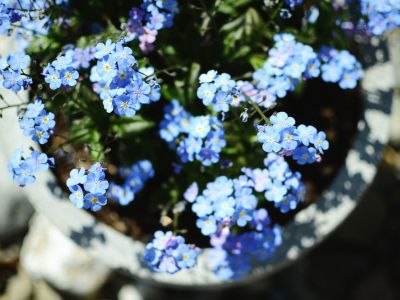Keep reading for some helpful tips on forget-me-not houseplant care.
Growing Forget-Me-Nots Inside
Plant annual forget-me-nots by seed or purchase small plants at a garden center. You can also start cuttings from established plants in midsummer. Place indoor forget-me-nots in containers filled with fresh potting mix. Be sure the pot has a hole in the bottom, as the plants will rot without adequate drainage. One plant per container is best for growing forget-me-nots inside, as the plants need plenty of air circulation. Full or partial sunlight is fine for forget-me-nots grown inside, but the plants won’t do well in too much shade. Rotate the pots every week to provide equal exposure to light so growth is even and not one-sided. Water when the top 2 to 3 inches (5-7.6 cm.) of potting mix feels dry to the touch, then let the soil dry before watering again. Water only enough to keep the plant from wilting during the winter when forget-me-nots are dormant. Feed indoor forget-me-nots monthly during summer using a dilute mixture of a general-purpose, water-soluble fertilizer if growth appears weak or leaves are turning yellow. You can move the plants outdoors in spring if you want, but be sure to harden them off to give them time to get accustomed to the harsher outdoor environment. Pinch flowers as they wilt to trigger continued blooming. Remove dead leaves and stems to keep indoor forget-me-nots neat and healthy.
Note About Toxicity: Indoor Forget-Me-Nots
European forget-me-not (Myosotis scorpioides), a perennial species, is toxic to mammals. The annual variety (Myosotis sylvatica) is considered nontoxic for pets and children and the blooms are often used to add color to salads or baked goods. However, they may give you a tummy ache if you eat a lot of them.
